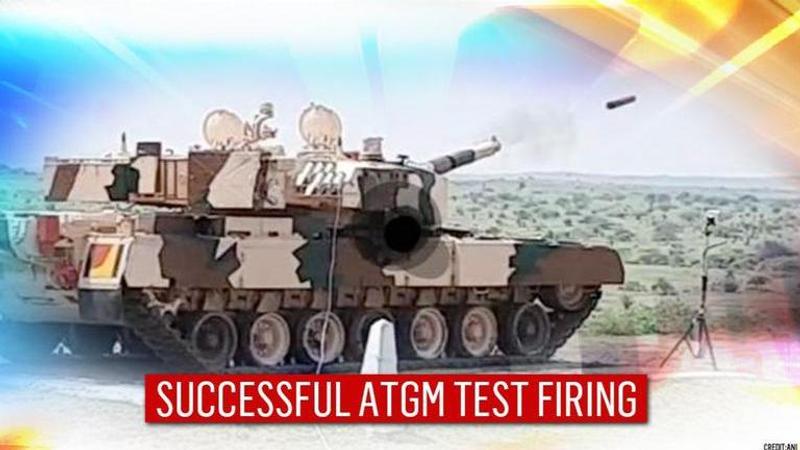Published 08:47 IST, October 2nd 2020
DRDO test fires Laser-Guided Anti-Tank Guided Missile, 2nd such successful test in a week
DRDO successfully test-fired an indigenously developed laser-guided anti-tank guided missile (ATGM) on Thursday from MBT Arjun Tank in Maharashtra's Ahmednagar.

Defence Research and Development Organisation (DRDO) successfully test-fired an indigenously developed laser-guided anti-tank guided missile (ATGM) on Thursday in Maharashtra's Ahmednagar. The missile was test-fired from an MBT Arjun Tank at KK Ranges in Armoured Corps Centre and School (ACC&S) in Ahmednagar to practice defeating a target located at longer range.
The laser-guided missile has been developed by Armament R&D Establishment (ARDE), Pune in association with High Energy Materials Research Laboratory (HEMRL), Pune and Instruments Research & Development Establishment (IRDE), Dehradun.
"The ATGM employs a tandem HEAT warhead to defeat Explosive Reactive Armour (ERA) protected armoured vehicles in ranges from 1.5 to 5 km. It has been developed with multiple-platform launch capability and is currently undergoing technical evaluation trials from 120 mm rifled gun of MBT Arjun," the release by Defence Ministry said.
The primary purpose of ATGMs, which can be both medium and long-range, is to destroy armoured vehicles including tanks. The missiles use several types of guidance systems to do this, including laser, TV cameras and wire guiding. Some are flexible enough to be used via an aircraft, by the infantry and through land vehicles. The test-firing on October 1 was in continuation of a successful trial done on September 22, 2020.
BrahMos test firing
This week, India successfully test-fired the extended range BrahMos supersonic cruise missile which can hit targets at over 400 km range. Test carried out under PJ-10 project of Defence Research and Development Organisation under which the missile was launched with an indigenous booster. Prime Minister Narendra Modi and Defence Minister Rajnath Singh both congratulated the DRDO team on the achievement.
India had entered into an agreement with Russia in 1998 and created a joint entity called ‘BrahMos Aerospace’. The name ‘BrahMos’ is a portmanteau of India's Brahmaputra River and Russia's Moskva River. The first-ever successful launch of BrahMos was on June 21, 2001. India and Russia are now planning to develop a new generation of Brahmos missile with 600 km-plus range.
ABHYAS test firing success
On September 22, the DRDO had also conducted a successful flight test of ABHYAS - High-speed Expendable Aerial Target (HEAT) from the Interim Test Range, Balasore in Odisha. ABHYAS is launched using a twin underslung booster and is powered by a small gas turbine engine and has MEMS-based Inertial Navigation System (INS) for navigation along with the Flight Control Computer (FCC) for guidance and control. The vehicle is programmed for fully autonomous flight while check out of air vehicle is done using laptop-based Ground Control Station (GCS).
During the test campaign, the user requirement of 5 km flying altitude, vehicle speed of 0.5 Mach, an endurance of 30 minutes, and 2g turn capability of the test vehicle, were successfully achieved.
Updated 08:47 IST, October 2nd 2020




